
Good morning. It’s Wednesday, June 21.
- Studies finds most California homeless are locals.
- Huntington Beach to limit “obscene” children’s books.
- And “Great Animal Orchestra” comes to San Francisco.
Statewide
1.
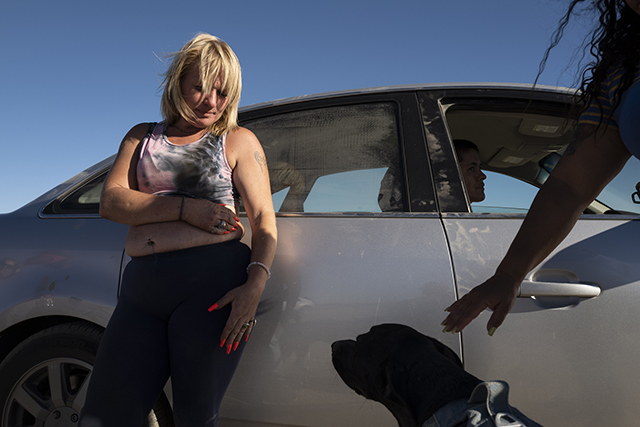
A large survey of homeless Californians found a striking connection between housing costs and the escalating crisis on the streets. In the six months before falling into homelessness, the 3,200 survey respondents earned a median household income of $960 a month in a state where the typical rent on a one-bedroom apartment is double that. Some 44% of respondents were over the age of 50, and 66% were born in California. The columnist Anita Chabria said one conclusion was unmistakable: “As Californians age, they are being priced out of housing.” L.A. Times | CalMatters
2.
“Crisis pregnancy centers,” which draw in pregnant women considering abortion and try to dissuade them from getting one, outnumber abortion clinics in rural California 11 to 2, an analysis found. Yet Democratic lawmakers have been reluctant to regulate the centers for fear of inviting legal battles. One seemingly modest bill that would have created an “awareness campaign” about abortion options was killed in May. “It literally didn’t say anything about crisis pregnancy centers,” the bill’s author said. “That’s as safe a bill as you can get.” CalMatters
3.
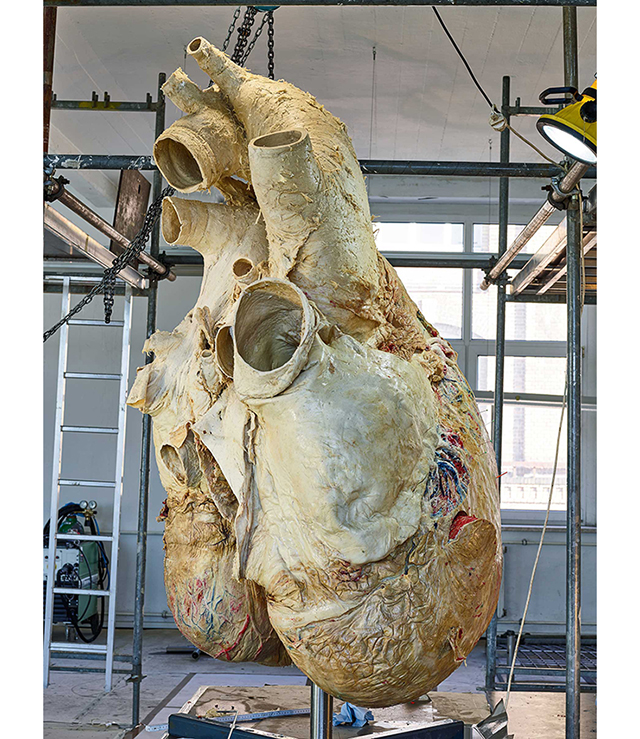
☝️ This is the actual heart of a blue whale, extracted from a beached specimen and preserved with resins for display. The blue whale is not just the largest animal on earth; it’s the largest creature ever known to exist, stretching longer than a basketball court. It requires a powerful engine. A blue whale’s heart weighs about 400 pounds and pumps a staggering 60 gallons of blood with each beat. The human heart? A mere 2.4 ounces. The Atlantic
- Scientists captured a blue whale’s heartbeat as it slowed to a mind-bending two beats per minute during a dive. You can listen to a reconstruction here. 👉 YouTube
- Summer is blue-whale watching season in California, as the giants migrate from their winter breeding grounds off Central America. Orange County drone photographer Mark Girardeau captured gorgeous footage last month. 👉 KTLA
Northern California
4.
Office vacancies are spreading in Silicon Valley as tech companies shed unwanted floors in response to layoffs and the remote work revolution. While the valley’s level of surplus office space hasn’t reached that of San Francisco, where the vacancy rate has tripled since 2019 to more than 25%, the rate in cities such as Menlo Park and Mountain View surpassed 20% this spring. The trend has sent shudders through the retail and restaurant community, which relies on the spending of tech workers. Wall Street Journal
5.
As San Francisco has been hobbled by a festering drug crisis and a wave of downtown closures, more than 75% of residents say the city is on the wrong track. With a mayoral election set for 2024, reporter Josh Koehn interviewed more than 50 people for a profile of Mayor London Breed, who faces increasingly bleak odds of securing a second term. “Is there a feeling of vulnerability?” one of Breed’s closest allies said. “One hundred percent, yes.” SF Standard
6.
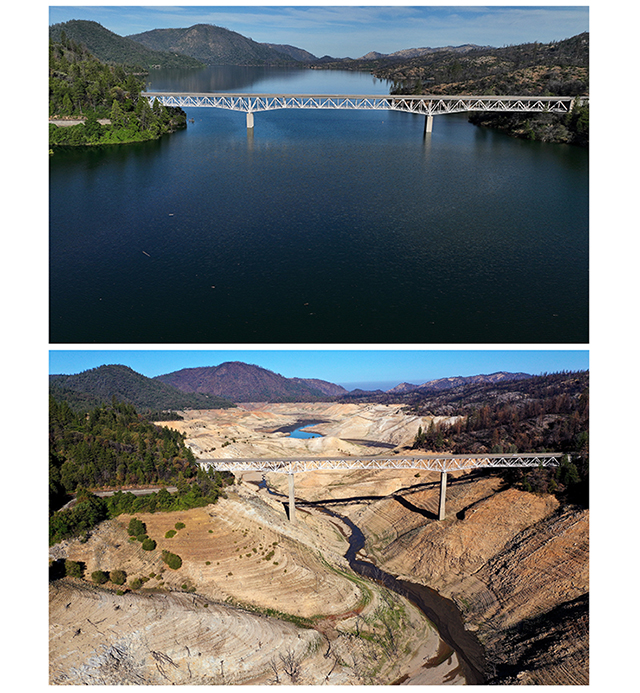
Earlier this month, Lake Oroville reached 100% capacity. That’s up from 27% on Dec. 1, 2022, before the deluges of winter raised the water level of California’s second-largest reservoir by more than 240 feet. The Getty Images photojournalist Justin Sullivan visited Lake Oroville last week to document the remarkable turnaround. See his photos. 👉 SFGATE
7.
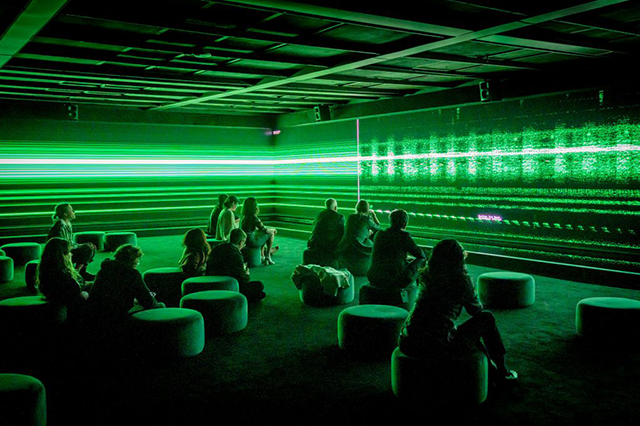
The soundscape ecologist Bernie Krause has been recording the sounds of the natural world since 1968, from meadows and rain forests to coral reefs and the arctic tundra. His recordings of howls, croaks, hums, trills, clicks, growls, and cries have been married with pulsating bands of light for a traveling exhibition, “The Great Animal Orchestra.” The latest stop is San Francisco’s Exploratorium, a homecoming for Krause, who lives in Sonoma. The Guardian | Artnet
- Hear Krause’s recording from Sequoia and Kings Canyon National Parks. 👉 YouTube
Southern California
8.
Huntington Beach leaders debated a motion to limit children’s access to sexually explicit library books during a contentious City Council meeting that stretched late into the night Tuesday. More than 100 residents spoke, most of them opposing the measure, which some argued amounted to a book ban. Mayor Tony Strickland had to repeatedly pound his gavel to restore order as people booed or shouted their displeasure. After more than seven hours, around 1 a.m., the council approved the measure in a 4-3 vote. O.C. Register | Voice of OC

Give something they’ll open every day.
Give the gift of the California Sun.
9.
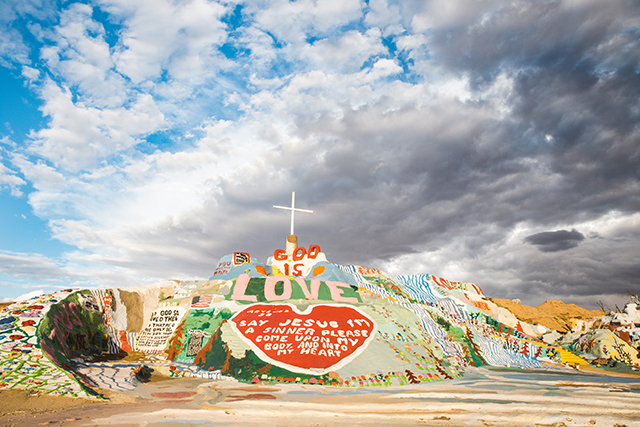
A former Christian megachurch pastor is trying to buy a parcel of desert land that is home to the squatter community of Slab City and the candy-colored folk artwork Salvation Mountain. Little is known about the prospective buyer, T D Walton, who has offered the state $1.5 million. But in a letter of intent, he pledged to “rehabilitate Salvation Mountain and Slab City to a safe space with a good reputation.” A group of locals in the fiercely independent community is drawing battle lines. SFGATE
10.
In Manhattan, the privacy of the rich and famous is secured with concrete and doormen. In Los Angeles, it’s all about the hedges. Entire blocks in neighborhoods like Beverly Hills and Bel Air are made up of homes individually cordoned off by sky-high walls of vegetation. The reporter Debra Kamin took a peek at life behind the hedges in Los Angeles. N.Y. Times
11.
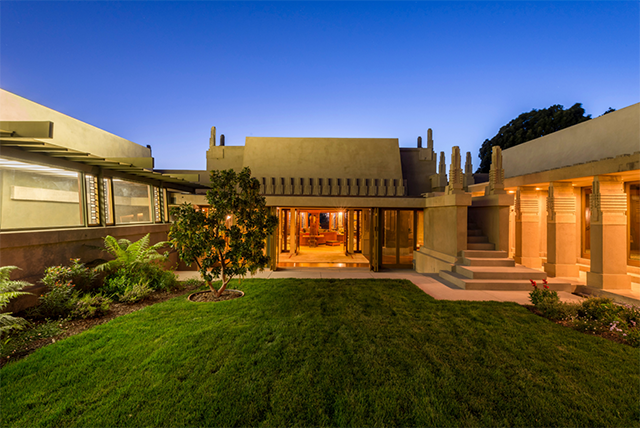
A Mayan-influenced home built by Frank Lloyd Wright in East Hollywood is arguably the birthplace of California Modernism. A century after its construction, the Hollyhock House has now embraced a new role as a space for contemporary art. A first-of-its-kind exhibition, called “Entanglements,” aims to bring in new energy by placing sculptures and paintings throughout the 5,000-square-foot home’s publicly accessible spaces. Bloomberg | Architectural Digest
12.
It’s the summer solstice today. In Southern California, the day when the northern hemisphere reaches its maximum tilt toward the sun kicks off the sunniest season of the sunniest place in the lower 48. According to daily sunlight data tracked by the CDC, the four U.S. counties with the highest average daily sunshine are San Diego, Riverside, Santa Barbara, and Imperial counties. The sunlight diminishes as you head further north, making Washington state and upper New England among the least sunny places in the U.S. with as little as roughly 60% of the daily sunshine that bathes Southern California. Washington Post
- Look up your county’s average daily sunlight. 👉 CDC.gov
Correction
An earlier version of this newsletter misstated the name of an exhibit at the Hollyhock House in Los Angeles. It’s Entanglements, not Entangled.
Thanks for reading!
The California Sun is written by Mike McPhate, a former California correspondent for the New York Times.
Make a one-time contribution to the California Sun.
Give a subscription as a gift.
Get a California Sun mug, T-shirt, phone case, hat, or hoodie.
Forward this email to a friend.
Click here to stop delivery, and here to update your billing information. (Note: Unsubscribing here does not cancel payments. To do that click here.)
The California Sun, PO Box 6868, Los Osos, CA 93412
Wake up to must-read news from around the Golden State delivered to your inbox each morning.
